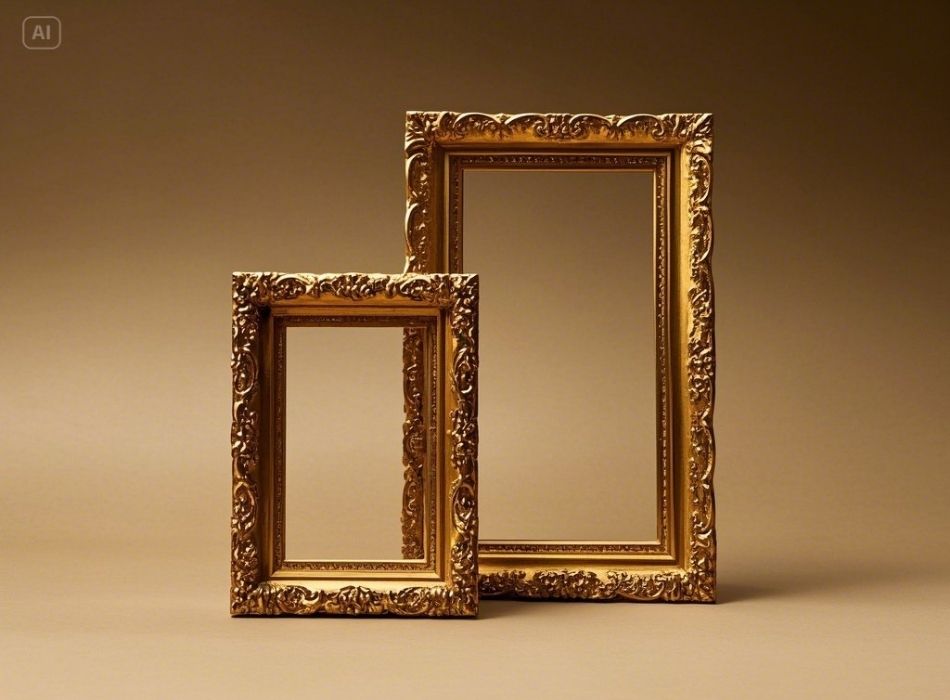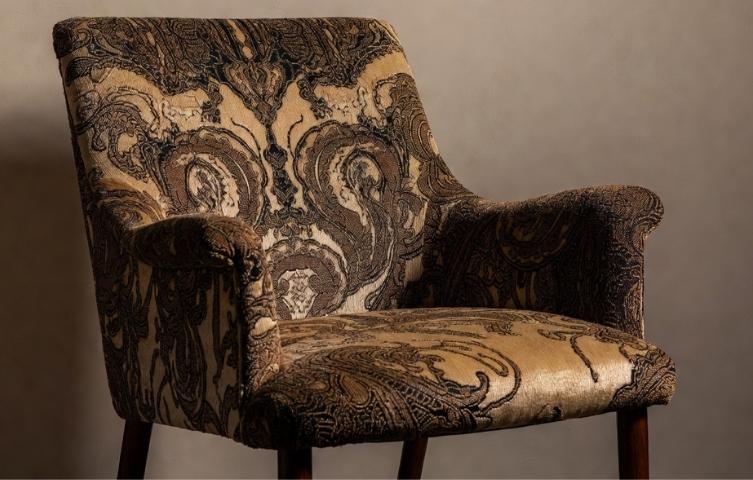For centuries, golden frames have adorned the walls of grand European palaces, prestigious galleries, and private collections. They’re not just a decorative choice but a conscious decision to enhance a piece of art while adding a sense of luxury to the space. But what exactly is the point of golden frames, and why do they remain a favorite among art enthusiasts, interior designers, and antique collectors?
This post explores golden frames’ allure, purpose, history, and how they can elevate art and interior design today. Whether you’re curating a personal art collection or looking to bring timeless elegance into your home, you’ll find plenty of reasons to appreciate their lasting significance.
The Purpose of Golden Frames
1. Enhancing the Artwork
At its core, a golden frame complements the artwork it surrounds. Gold, a neutral yet radiant color, enhances warm and cool tones in the artwork without overpowering or clashing with them.
For example, placing a Renaissance painting within an elaborately gilded frame softens the transition between the piece and its surroundings, allowing the viewer to focus entirely on the art.
Golden frames also act as visual boundaries. Encasing the painting or photograph creates a clear focal point that draws the viewer’s eyes inward to the central art.
2. A Symbol of Status and Prestige

Historically, gilded frames were synonymous with wealth and status. During the Renaissance and Baroque periods, they became popular among royalty, nobility, and the clergy. These frames weren’t just functional; they symbolized power, wealth, and appreciation for the fine arts.
Even today, golden frames retain a sense of sophistication. Walking into a room adorned with gilded art tells a story of refined taste and tradition. This is one of the reasons antique collectors prize golden frames—not only for their beauty but also for the legacy they represent.
3. Durability and Timeless Appeal
Gold is famously resistant to tarnish, guaranteeing that a high-quality gilded frame can last for generations. The durability of these frames ensures they hold both their structural integrity and visual appeal over time. For antique collectors, this longevity adds an extra layer of value; a centuries-old golden frame often gains a patina, enhancing its character and history. This timelessness extends to contemporary gilded frames, as their classic look seamlessly fits into any interior design style.
Furthermore, gilded frames are often handcrafted with intricate designs and details, making each unique and unique. Combining skilled craftsmanship and durable materials ensures these frames remain visually appealing for years.
4. Versatility in Design
Another advantage of using a gilded frame is its versatility in design. While gold may be the most common color for this type of frame, gilding can also be done in shades such as silver, bronze, or copper. This allows for more design options and the ability to customize the frame to complement any artwork or home décor.
Various gilding techniques can achieve different finishes and textures, including water, oil, or leaf gilding. This versatility in design makes gilded frames suitable for traditional and modern art styles and home décor.
5. Preservation

Gilded frames not only add aesthetic value but also protect valuable artwork. Adding layers of gold or metallic leaves creates a protective barrier that helps prevent damage from external factors such as moisture, sunlight, and dust.
Using high-quality materials and skilled craftsmanship ensures these frames remain sturdy and durable. They are also relatively easy to maintain, requiring occasional dusting and cleaning with a soft cloth.
In contrast, cheaper frames made from materials such as plastic or particle board may not provide the same level of protection and can deteriorate quickly, potentially damaging the artwork.
Investing in gilded frames for valuable or sentimental pieces can help preserve them for future generations.
6. Versatility
Gilded frames are versatile and can complement various art styles and home décor themes. They come in different designs, finishes, and sizes, enabling you to achieve a cohesive look throughout your home.
For instance, ornately carved gold frames would be perfect for showcasing Renaissance or Baroque-style paintings, while more straightforward and streamlined frames would suit contemporary artworks.
Additionally, gilded frames can add a touch of luxury and elegance to any room. They can highlight your favorite family photos or create a focal point for a gallery wall.
7. Easy Maintenance
Maintaining the appearance of a gilded frame is relatively easy and requires minimal effort. Regular dusting with a soft cloth should suffice to keep it looking shiny and new.
If you notice any buildup of grime or dirt on the frame, use a damp cloth to wipe it away gently. Avoid using harsh chemicals or abrasive materials as they may damage the delicate finish of the frame.
The History of Golden Frames

Golden frames date back to ancient Egypt, where pharaohs would embellish art, furniture, and tomb interiors with gold leaf to honor the gods and showcase their divine power.
The tradition evolved dramatically during the Renaissance when artists and artisans began creating intricate gilded frames to house religious works commissioned by the church. These frames were often treated with techniques such as water gilding, giving them a luminous, glowing finish. The Baroque era saw even more elaborate designs, with floral motifs, scrollwork, and cherubs embellishing the frames.
During the Victorian period, golden frames became more accessible, and their designs evolved to feature a wide range of ornate patterns, catering to the tastes of the middle class. Today, golden frames remain a staple in classic and modern aesthetics but are available at various prices, ensuring they cater to all art and design enthusiasts.
Golden Frames in Modern Interior Design
Golden frames might carry centuries of tradition, but they’re just as relevant in contemporary interiors. Here’s how interior designers use these timeless pieces to elevate modern spaces:
1. Creating Contrast with Minimalist Design
The sleek, uncluttered lines of modern and minimalist interiors may seem at odds with ornate golden frames, but this contrast can be striking. A gilded frame acts as a statement piece, adding warmth and a layer of intricacy to clean, neutral backdrops.
For example, a sharp white wall gallery accentuated by a single traditional gilded frame surrounding abstract art creates an undeniable juxtaposition that grabs attention.
2. Adding Warmth and Depth

Gold’s warm undertone offers a welcoming aesthetic. A gallery wall with gold-accented photo frames or a large, gilded mirror above a mantelpiece can instantly brighten the room while maintaining an elegant vibe. This makes golden frames particularly effective in dining rooms, living rooms, or even bedrooms.
3. Highlighting Focal Points
Interior designers often use golden frames to emphasize focal points in large or eclectic spaces. They serve as anchors, giving viewers a clear visual direction around the room. For instance, a gilded frame around an inherited portrait can lend gravitas and intimacy to a reading nook. A gold-framed mirror can add depth and interest to a bare wall. In essence, golden frames are great for highlighting essential elements in a room and drawing attention to them.
Golden frames can also amplify the impact of other decorative items in a space. Pairing them with bold or colorful artwork can create a striking contrast that instantly catches the eye. Additionally, they work well with statement pieces like sculptures or vases, creating an opulent display that elevates the overall aesthetic of a room.
4. Versatility and Timelessness
One of the best things about using golden frames in interior design is their versatility. They come in various styles, from ornate baroque designs to sleek modern ones, making it easy to find one that fits your style and the overall theme of your space.
Moreover, golden frames are timeless. They never go out of style and can be incorporated into design trends without looking outdated. This makes them a wise investment for those who want to create a classic and elegant look in their homes.
5. Easy Maintenance
Golden frames may give off a luxurious vibe but require minimal maintenance. Gold is less prone to damage from moisture or insects than other materials like wood or fabric. It also does not need frequent polishing or cleaning, making it an ideal choice for busy homeowners.
Tips for Antique Collectors

For antique collectors, golden frames often carry as much historical and financial value as the artwork they encase. Here are a few tips if you’re interested in adding them to your collection:
- Inspect for Authenticity: Genuine gilded frames from older periods often show subtle imperfections or signs of wear. Look for details like craftsman’s stamps, signatures, or consistent patterns that match the period.
- Avoid Over-Restoration: Antique gilded frames with natural aging or patina are more desirable than over-polished ones. A slight wear adds to their charm and authenticity.
- Pair Carefully: If purchasing a frame separately from the artwork, ensure the two complement one another stylistically. For example, a gilded Art Deco frame may look out of place around a highly traditional pastoral scene.
- Consider Conservation: If the artwork’s value is significant, it may be worth investing in conservation framing techniques that use acid-free materials and UV-protective glass to prevent damage over time.
- Be Mindful of Display Location: When selecting a frame for your artwork, consider where it will be displayed. A highly ornate frame may be better suited for a formal living room or dining room, while a simpler design may work better in a bedroom or office space.
- Mix and Match: Don’t be afraid to mix frames of different styles and eras for an eclectic look. This can add interest and personality to a gallery wall or collection of artwork.
- Experiment with Finishes: Frames come in various finishes, including wood, metal, and painted. Don’t be afraid to experiment with different finishes to find the one that best complements your artwork.
- Consider Matting: Matting can add depth and visual interest to a framed piece of art and help protect the artwork from direct contact with the glass or acrylic surface.
- Think About Proportion: The size of your frame should be proportional to the size of your artwork. A small frame on a large piece of art can look out of place, while a large frame on a small piece can overwhelm the artwork.
- Utilize Negative Space: Consider framing frames with wider mat borders or leaving negative space around the artwork. This can help draw attention to the art and create a more balanced composition.
- Mix and Match Frames: Don’t be afraid to mix and match different frame styles and colors for an eclectic look. However, make sure there is some element of cohesiveness, such as using frames with similar widths or finishes.
- Think Beyond Traditional Artwork: Frames aren’t just for paintings or photographs. They can also be used to display other objects, such as maps, vintage postcards, or even pressed flowers. Get creative with your framing choices!
- Consider Your Hanging Method: Before purchasing frames, consider how you plan to hang them. Will you be using nails or a hanging wire? This will affect the type of frame and hardware you need to buy.
- Experiment with Layouts: Don’t be afraid to mix and match different sizes, shapes, and orientations when creating a gallery wall. Play around with different arrangements before committing to one layout.
- Keep It Simple: While filling every inch of wall space with frames can be tempting, sometimes less is more. Consider leaving some blank space between frames or opting for a minimalist display.
- Use Frames as Accent Pieces: Frames themselves can be decorative objects. Look for unique or vintage frames that add visual interest to your walls, even without artwork.
Tasting Tradition While Keeping It Fresh
Despite their deep historical roots, golden frames are surprisingly versatile. Whether you’re displaying classical art, modern pieces, or eclectic décor, these frames add polish and pull a space together with authority.
But beyond their functional roles, golden frames represent a love for art and design transcending time. They’re a nod to history, a celebration of craftsmanship, and a bridge between past and present.
Shine Bright with a Golden Choice
Golden frames aren’t just about aesthetics; they’re about storytelling, appreciation, and creating spaces that exude personality. For art enthusiasts, interior designers, and antique collectors, their versatility and enduring charm ensure they remain integral to art and interiors for years.
Looking for more ways to showcase artwork elegantly? Explore our gallery of curated pieces and tips for frame selection to transform your space today!











